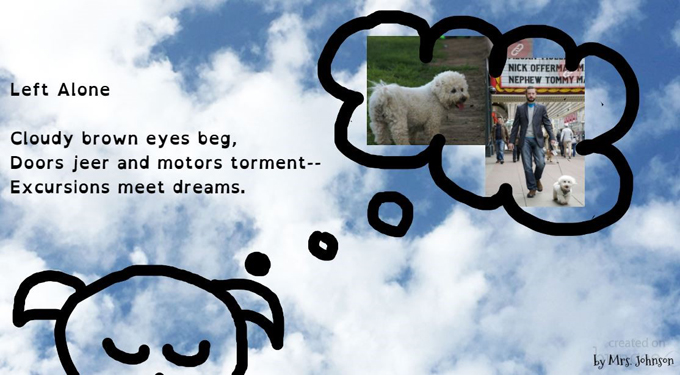 April is National Poetry Month, when the genre becomes the focus of my middle school classroom’s writing workshop. Although pioneers of writing workshop pedagogy, such as Donald Murray, taught in an analog world, today’s writing is largely digital. Therefore, we align with Murray’s vision of students as authentic writers when we integrate digital tools and spaces for supporting—and inspiring—21st-century poets.
April is National Poetry Month, when the genre becomes the focus of my middle school classroom’s writing workshop. Although pioneers of writing workshop pedagogy, such as Donald Murray, taught in an analog world, today’s writing is largely digital. Therefore, we align with Murray’s vision of students as authentic writers when we integrate digital tools and spaces for supporting—and inspiring—21st-century poets.
Digital tools that facilitate the writing process
In the prewriting stage of the writing process, students brainstorm ideas using digital mapping tools such as Popplet, Coggle or Bubbl.us. These maps are aligned to possible writing topics, including possessions from our lives that symbolize abstract emotions; people who have motivated or inspired us; and places that have grounded our experiences. Students store their maps in Google Drive or embed them in the digital notebooks (stored in Google Slides) to reference each time they begin a new poem.
During the drafting process, Google Docs is our go-to space, but other tools can scaffold the drafting of unique poetic forms. ReadWriteThink provides interactive spaces for drafting haiku, diamante, acrostic, letter, concrete, and other poetry forms. When I want to share model texts, I use the Poetry Foundation’s selection, where poems are categorized by audience age, topic, and form.
In revision, attention to word choice is central to the poet’s craft. A Google Docs add-on called OneLook Thesaurus provides synonyms, rhyming words, and associated adjectives or nouns. (For non-Chrome users, RhymeZone is another option.) I also use ReadWriteThink’s interactive Line Break Explorer to teach students to divide lines with thought and purpose.
Digital tools for presenting
When our poems reach the finished-for-now stage, we experiment with digital formats for presentation. Students combine images and design elements to display poems in poster style using Piktochart or Buncee (see image). For creating multimedia poems with voiceover, music, and moving images, I suggest Adobe Spark, LittleBirdTales, or WeVideo.
Spoken word poetry in digital spaces
YouTube is a cornucopia of spoken word poetry, which inspires my students more than any other form. However, when browsing YouTube for examples, careful curation is essential. Jeanne Woltz has an extensive list of spoken word performances appropriate for middle and high school students. I curate my personal favorites using visual web collectors like TesTeach or Symbaloo. We begin with Holly Painter’s “Find Your Voice” and add performances by Taylor Mali, Sarah Kay, and Daniel Beaty to model unique aspects of the performance poet’s craft.
When students are ready to publish their own spoken word performances, I prefer more secure spaces. This post details how to use Flipgrid to share video recordings, but another option is Padlet, which now allows users to record video directly to a shared bulletin board space. The video feature is available in both Firefox and Chrome, so is an excellent (free!) option for Chromebook users.
Poetry in social media spaces
Finally, don’t forget social media for both models and publishing. Thousands of young poets are embracing social networks as a publishing space. For example, Rupi Kaur has become a best-selling sensation through Instagram while Brian Billston found his audience on Twitter. A search using hashtags like #poem, #poetry, or #instapoem will yield thousands of models to share with students and will inspire them to publish their own poetry in these spaces as messages, images, or videos. Add hashtags to expand students’ reach to wider audiences and to engage them in the larger conversation of poets worldwide.
Angie Johnson earned a PhD in educational psychology and educational technology from Michigan State University. She teaches eighth-grade language arts and is a media and technology integration specialist at Lakeshore Middle School in Stevensville, MI.